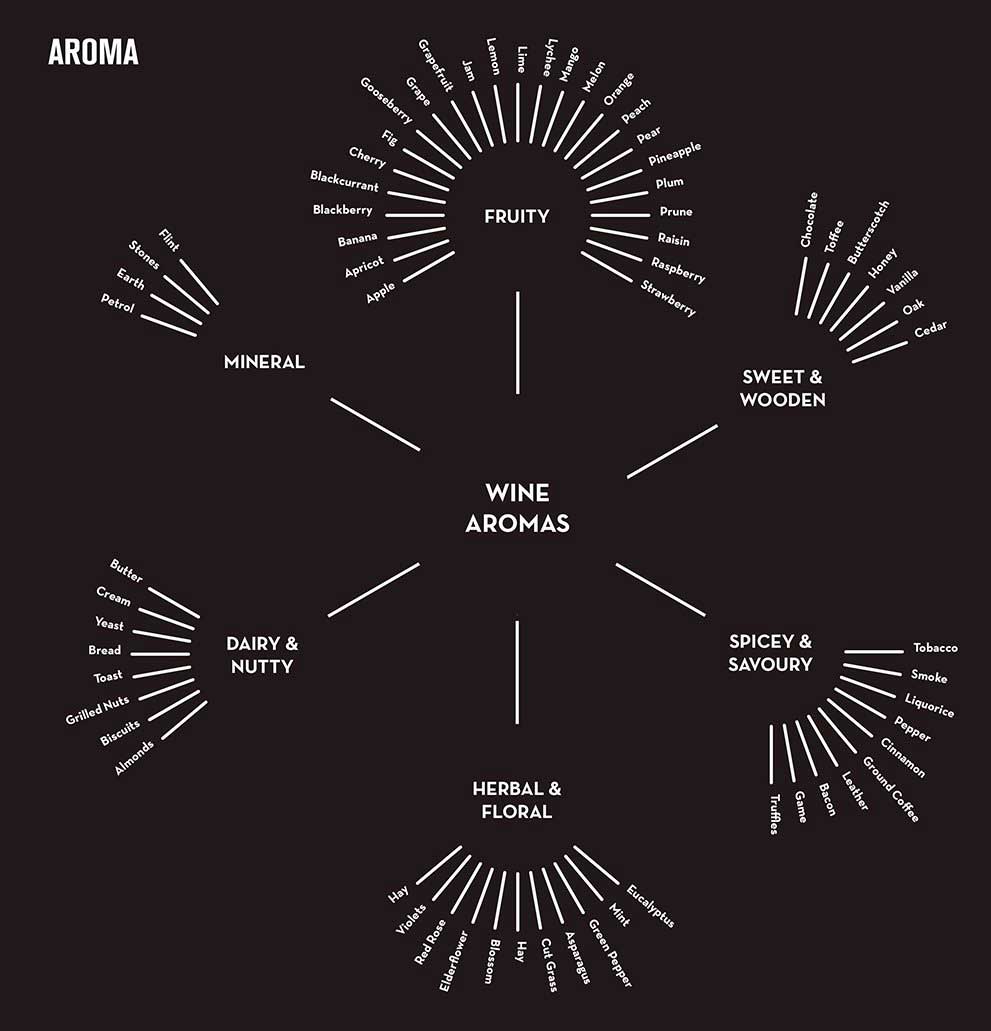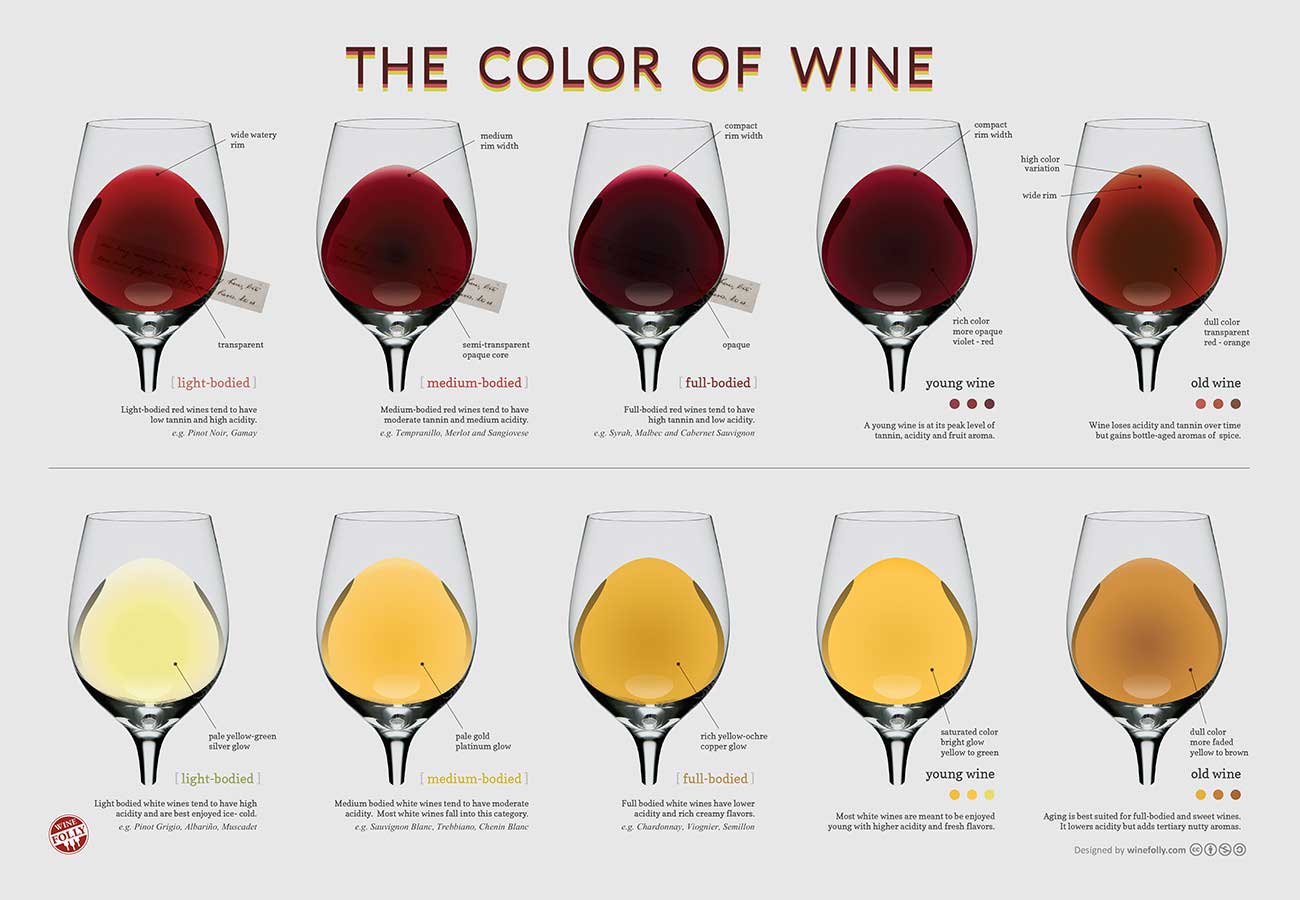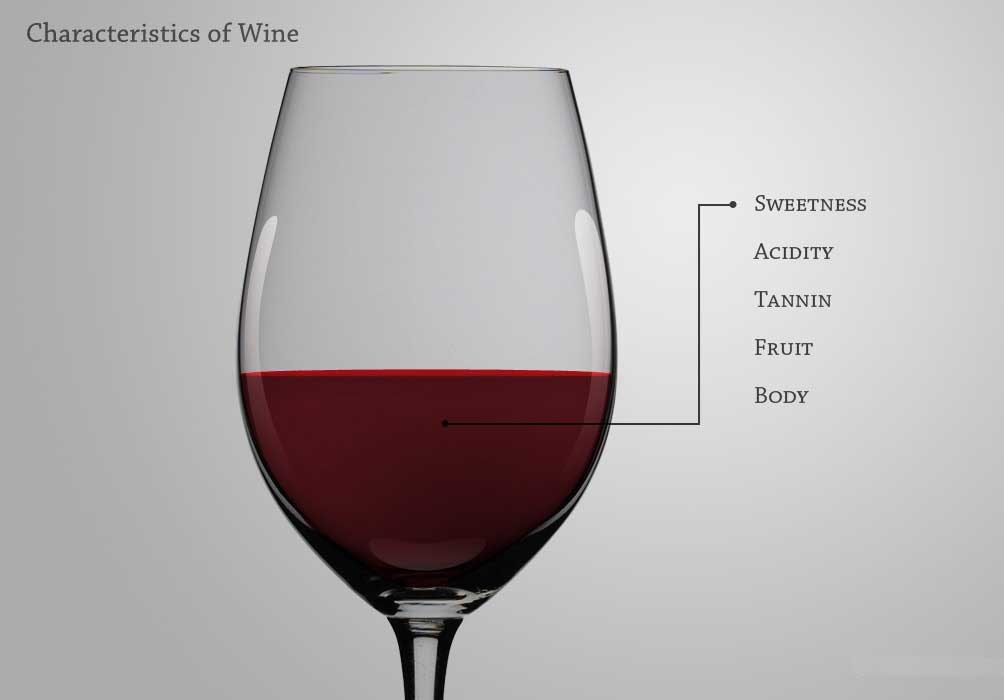Wine Characteristics
Understanding the 5 fundamental traits of wine, detailed below, is the best way to learn about one’s palate.
“Learn to identify the characteristics of wine.
Sweetness: aka “Level of Dryness”
Acidity
Understanding Tannins
Fruit: Flavours
Light to Full-Bodied
How to Taste it in Wine
- Tingling sensation on the tip of the tongue.
- Slight oily sensation lingering in the middle of the tongue.
- Wine has a higher viscosity; wine tears on side of glass slowly.
- Cheaper dry red wines such as cabernet sauvignon often have up to 0.9 g/L of residual sugar.
- A bone-dry wine can often be confused with a wine with high Tannin.
Acidity Characteristics
- Tingling sensation that focuses on the front and sides of the tongue.
- If one rubs their tongue to the roof of the mouth it will feel gravelly.
- The mouth feels wet, like biting into an apple.
- It is common for wines grown in cooler climates to have higher acidity. Wines with higher acidity feel lighter weight because they come across as ‘spritzy.’ Conversely, wines with less acidity are more rich and round.
Tannin in wine is the presence of phenolic compounds that add bitterness to a wine. Phenolics are found in the skins and seeds of wine grapes and can also be added to a wine with the use of aging in wood (oak).
How Does a High Tannin Wine Taste?
- Tannin can often be confused with the term “dry” because it dries the mouth out.
- Tannin tastes bitter on the front inside of the mouth and along the side of the tongue; one will experience a drying sensation in the mouth.
- Tannin tastes herbaceous and is often described as astringent. It adds balance, complexity, structure and makes a wine last longer.
- High Tannin Wines: Nebbiolo, Cabernet Sauvignon, Tempranillo, Montepulciano, Petit Verdot and Petite Sirah.
- Low Tannin Wines: Barbera, Zinfandel, Pinot Noir, Primitivo, Grenache and Merlot.
Tasting for fruitiness in a wine
- A wine is fruity when it has distinct aromas and flavors of fruit. One smells the fruitiness with the nose; in the mouth, one can “smell” it through the retro nasal passage.
- Red Wine: Red fruits such as raspberry or dark fruits like blackberry and blueberry.
- White Wine: Lemon and Lime or Peach and Yellow Apple.
Light, medium or full-bodied wine? “Body” describes the texture or weight of a wine in the mouth. It is the result of many factors, including wine variety, provenance, vintage, ABV and how it is made. In essence, body is a snapshot of the overall impression of a wine.
Alcohol Level ABV (or Alcohol by Volume) adds body. The wine will have a higher viscosity which is easily seen in watching it bead on the side of the glass. A high alcohol wine typically tastes fuller bodied than a light-alcohol wine.
Full-bodied wines typically come from warmer regions and would include most New World Reds, but also many Italian reds (especially Barolo and Southern Italian reds), French reds (Southern Rhône wines such as Gigondas or Châteauneuf-du-Pape), as well as Spanish reds (from Priorat and Toro to name but a few).
Full-bodied wines have a rich, complex, well-rounded flavor that lingers in the mouth. On the opposite end of the spectrum are subtle, more watery, light-bodied wines, while medium-bodied wines fall somewhere in between. Both white and red wines have full-bodied varieties. Dry white wines, particularly those aged either fully or partly in wood, tend to be more full-bodied. Chardonnay and Sauvignon Blanc are two examples of these. Full-bodied red wines include Cabernet and French Bordeaux.
 Aroma
AromaAcids, aroma compounds, glycerol (mouth-feel), oak, polyphenols (tannin and colour) and sugar are key components of the total wine tasting experience. They contribute to the bouquet, aroma, taste and sensations of wine.
 Body
Body“Body” describes the texture or weight of a wine in the mouth. It is the result of many factors, including wine variety, provenance, vintage, ABV and how it is made. In essence, body is a snapshot of the overall impression of a wine.
 Pairing
PairingPairing wine with food is more art than science and all comes down to a matter of a personal taste. However, having knowledge of ways to properly pair wine with food can truly intensify one’s experience of eating. Our guide provides tips to help understand how to balance the flavours and the weight of various dishes with popular wines.

